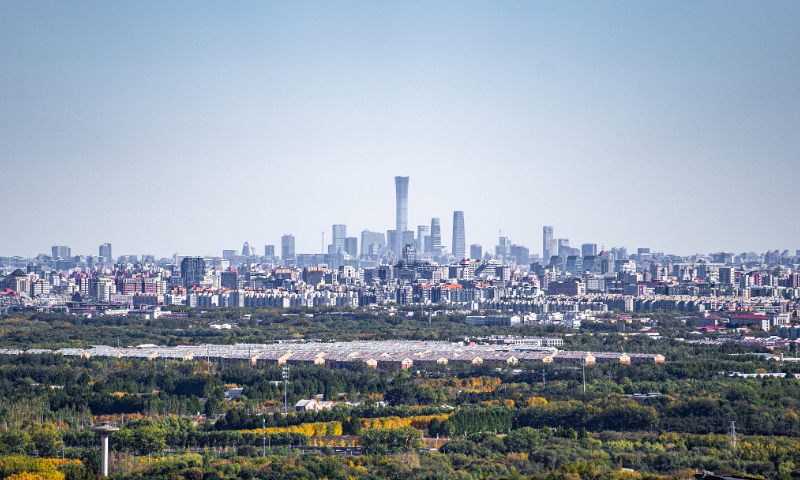Beijing's central area sees a decline of over 2 million in permanent population over 7 years

A view of Beijing Photo: VCG
The permanent population in the central area of Beijing decreased by more than 2 million people from 2015 to 2022, according to a report released by the Beijing Municipal Bureau of Statistics on Monday.
The permanent population in the central area of Beijing was 10.945 million at the end of 2022, a decrease of 2.029 million from the peak in 2015, according to the report, which is one of a series of reports on the 10-year achievements of Beijing-Tianjin-Hebei region's coordinated development launched for eight consecutive days from Sunday, media reported.
The GDP of the central area of Beijing exceeded 3 trillion yuan ($417 billion) in 2022, reaching 3.2 trillion yuan in 2023, an increase of 1.1 times compared to 2013. The per capita disposable income of residents in each district has increased by more than 90 percent since 2013, with the number in Dongcheng, Xicheng, Chaoyang and Fengtai districts doubling.
The capital has also witnessed great progress in promoting the special program of upgrading urban management. One of the tasks is the relocation of Beijing municipal government agencies, which began in January 2019. By the end of January in 2024, the second batch of municipal government agencies had completed their relocation.
As of now, all Beijing municipal government agencies, except those responsible for maintaining capital security and stability, ensuring urban operations, carrying out local management functions, and providing management services to citizens, businesses and society, have been relocated to Beijing's sub-center.
In the central area of Beijing, a number of regional professional markets, logistics centers, and general manufacturing enterprises have been cleaned up, relocated, and upgraded. Over 80 million square meters of illegal constructions have been demolished, and more than 6,000 hectares of land have been vacated.
The space vacated in the central area has begun to transform and upgrade, with wholesale markets "transformed" into modern office buildings, old commercial districts upgraded to trendy new landmarks, and old factory buildings undergoing industrial transformation. Urban parks have also been built on vacated land.
According to the report, in 2023, the proportion of the tertiary industry in the industrial structures exceeded 90 percent in Beijing's central area.
Moreover, the value added of information transmission, software and information technology services, as well as finance in the central area has increased by 3.3 times and 1.7 times respectively compared to 2013, with average annual growth rates of 15.6 percent and 10.5 percent, both higher than the city's average growth rate. The combined share of these industries in the regional GDP increased from less than 30 percent in 2013 to nearly 50 percent in 2023, while the combined share of wholesale and retail trade and industry dropped by nearly 10 percent.
Global Times

